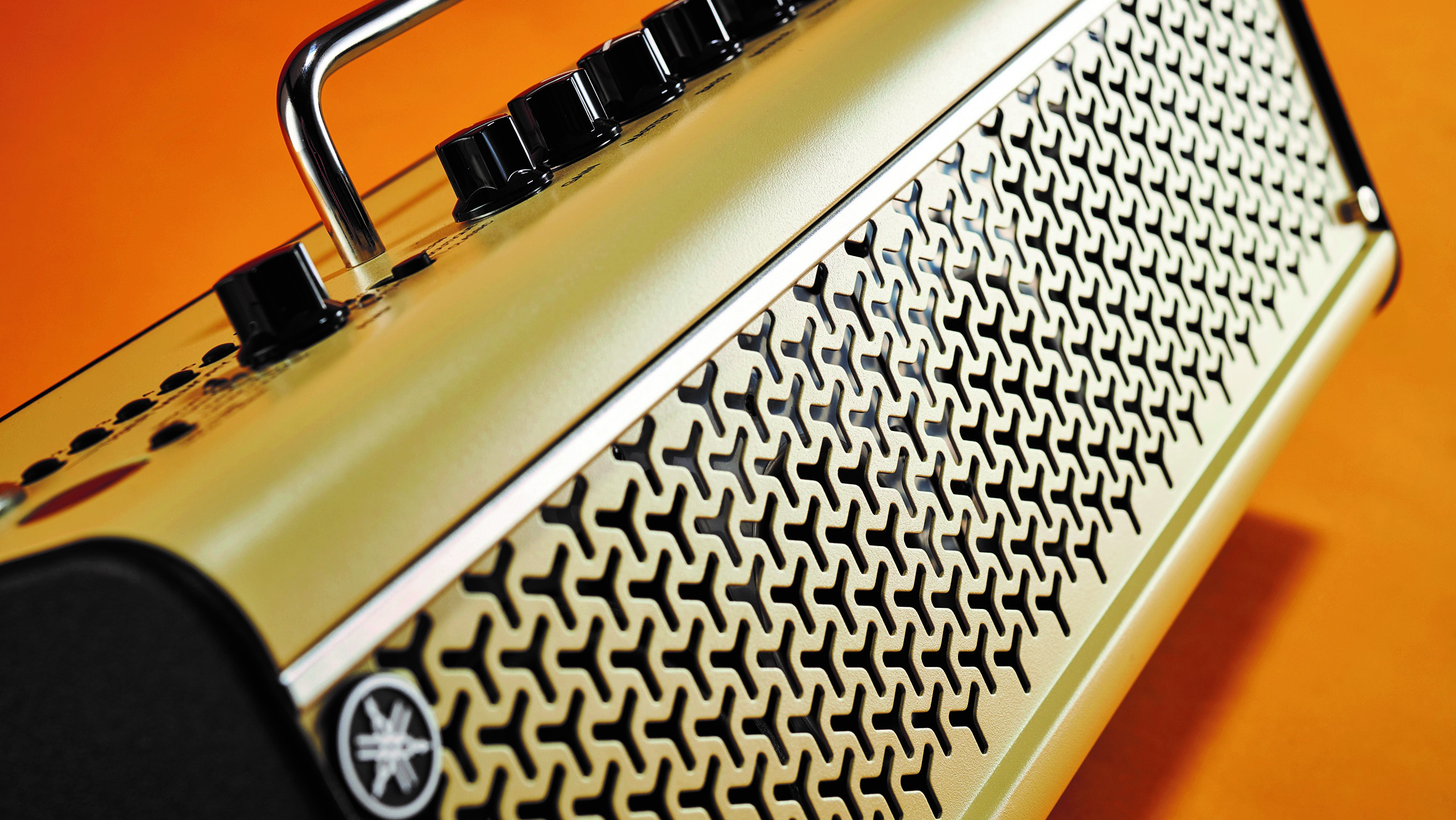Guitar World Verdict
More power, lineouts and wireless are the headline-grabbing features of this second reiteration of Yamaha's ground-breaking desktop amp series. Best of all, it sounds sublime…
Pros
- +
Sounds incredible
- +
Tasteful looks
- +
Easy-to-use top panel
- +
All 15 amp models now included
- +
Rechargeable battery
- +
Totally wireless
- +
Bluetooth
- +
Increased power and headroom
Cons
- -
No effects loop
- -
Expensive
You can trust Guitar World
It's hard to believe now, but before Yamaha launched its THR series just over a decade ago, the average practice amp (trust us, they were very average) sounded remarkably like an enraged wasp in a tin can. Full of custard.
Typically thin, nasally, gutless and muddier than the Mississippi Delta, it's no wonder that players dreamed of upgrading to something like a Fender Twin, an AC30, a Mesa Boogie Mark IIC+ or a Marshall JCM800. Sadly, the well-healed ones who did would have made two alarming discoveries. First, noise abatement orders are ruinously expensive, and second, playing at neighbor-friendly volumes sucks all the tone from even the finest guitar amps.
Fortunately, Yamaha came to the rescue with its little THR10 and tiddly THR5 amps. These were game changers because, for the first time, guitarists could experience authentic classic amp tones at living room volumes.
Just as importantly, these toaster-sized wonders looked rather tasteful in a retro-modern, art-deco-ish kinda way. So much so, they weren't visually toxic to close family, putting paid to scathing GAS-killing comments such as: "I'm not having that monstrosity in my living room!" Rather than unimaginatively wrapping a small cab in cheap black vinyl, while muttering 'that'll do', it seems that somebody in Yamaha's design department actually gave a damn.
This masterful combination of considered design, authentic modelling and fine audio (Yamaha's music division turned to its home entertainment boffins for help in getting a huge sound from tiny speakers) spawned an entirely new product genre – the desktop amp. Yamaha sold gazillions.
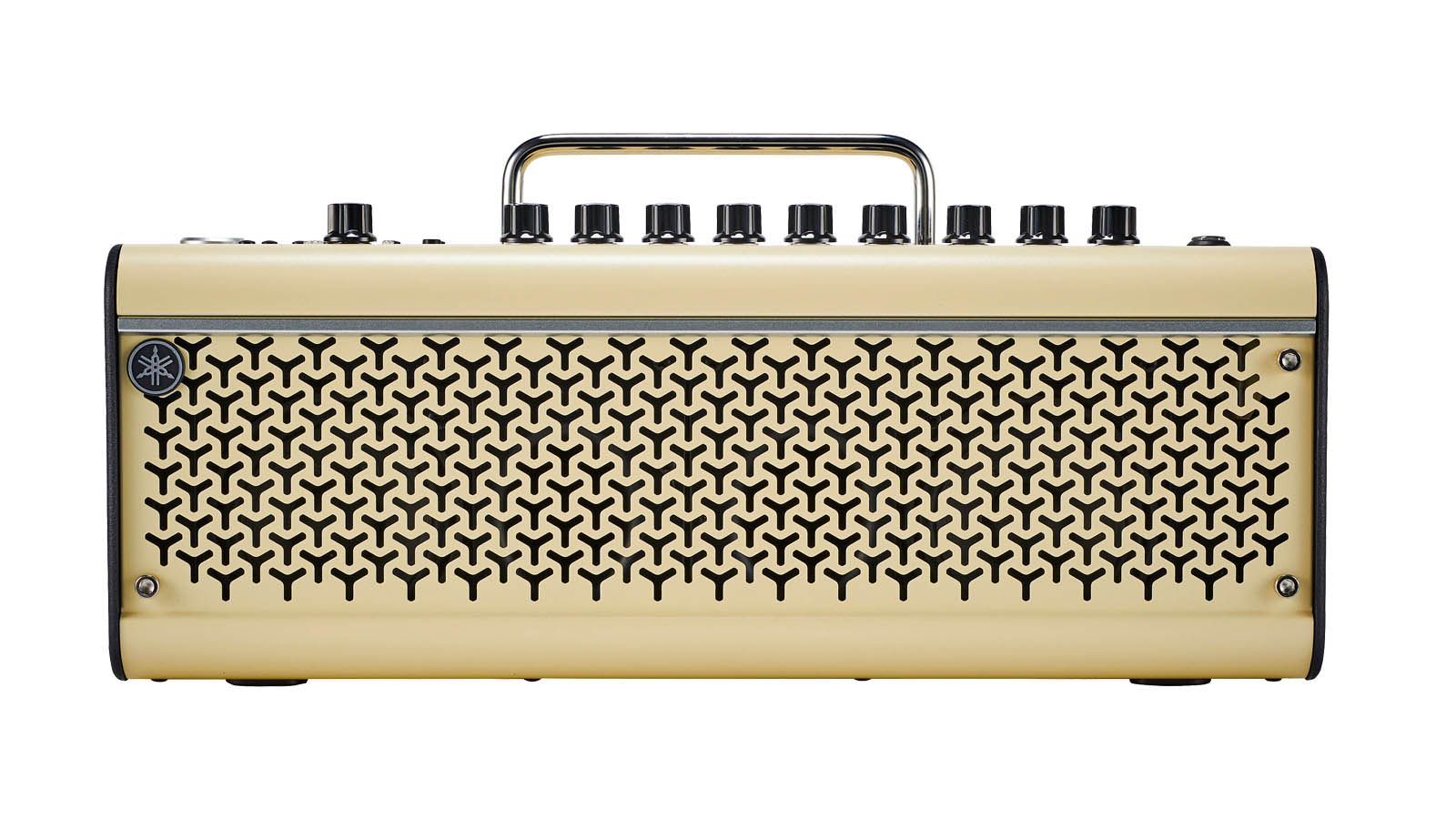
The two original amps were quickly joined by the bluesy-voiced THR10C, and an extreme high gain model, the THR10X. Puzzlingly, Yamaha then sat back for the best part of ten years, letting the competition catch up and ultimately overtake it with products such as the Boss Katana Air Wireless and the Vox Adio Air.
Then, about 18 months ago, Yamaha launched the THRII Series, finally introducing a slew of long-awaited new features and power upgrades. The THR30II Wireless sits right at the top of the model range – does it punch hard enough to enable Yamaha to win back its crown as king of the Desktop Amps? Let's see.
Yamaha THR30II Wireless review: Form & function
The THR30II Wireless looks reassuringly similar to the original amps. Its smart, cream metal front and top, with subtle chrome details, is just as elegantly executed, even if we do prefer the original herringbone-style cut-outs to the new Yamaha inspired Ys. Along the top sits a long, neat row of glossy, black, fluted knobs to shape your sound with gain, EQ and effects. There's also a small numerical LED screen, various inputs/outputs including wireless plus five user memory buttons. A minimalist chrome carry handle tops off the unit, contributing to the retro vibe.
Round the back and sides it's all tough, moulded, textured black plastic that'll easily shrug off a few good knocks and then some. A USB port and two quarter inch lineouts sit centrally on the rear panel, enabling you to hook it up to your computer or audio interface for recording.
The THR30II Wireless is slightly larger than its similar looking THR10II siblings – the THR10II Wireless and THR10II non-wireless – and weighs about a kilo more, but it's still unobtrusive enough to sit discreetly on a bookshelf or desk. Rated at 30 Watts (2 x 15W) it needs the extra space to house a pair of 3.5"(9cm) speakers against the THR10II's 3.1"(8cm) pair. Slightly confusingly, although Yamaha has stuck with the THR10 naming convention for these lesser models, they have benefitted from a power upgrade to 20 Watts (2 x 10W).
Bluetooth enables you to connect Yamaha's THR Remote app for deep system edits, as well as stream backing tracks to jam along to
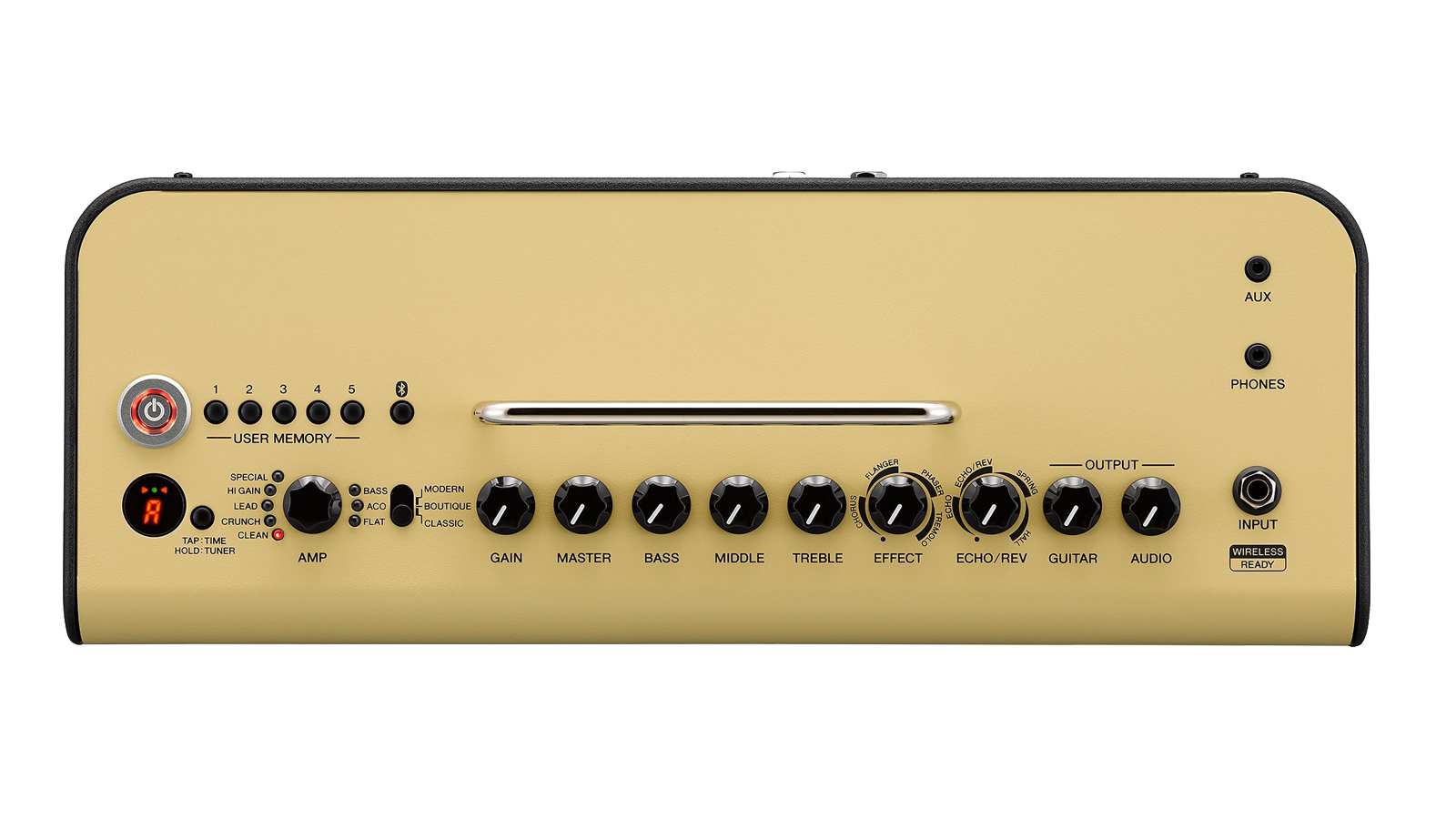
The THR30II Wireless' larger form size has also enabled Yamaha to provide direct, top panel access to its 15 amp models, which is an important feature for many guitarists. More on this below.
Perhaps the most significant suite of upgrades falls under the new Wireless moniker. Yes, the THR30II Wireless can be used sans guitar cables of any sort. Bluetooth enables you to connect Yamaha's THR Remote app for deep system edits, as well as stream backing tracks to jam along to.
The previous THR10 series could be mains or battery powered but the prospect of it gobbling through eight AA batteries at a time was prohibitively expensive for most guitarists. Thankfully, all wireless models now have an internal rechargeable battery that should last about five hours, if you're playing at medium volume levels. So, no more mains cable clutter if you fancy moving it to the centre of your living room.
The wireless THR-IIs also now feature an integrated Line 6 Relay G10 receiver. Just buy a G10 transmitter (street price about $/£100) to discover the overwhelming sense of liberation that comes with a cable-free setup. In practice, this means you can sit in your local park, jamming along to your favorite tracks completely cable free for up to five hours at a time. Which is more than enough for everyone.
Yamaha THR30II Wireless review: Sound
Even when the old THR10 should have retired, drawn a pension and moved to a residential home, it was still a strong seller. Why? Because it sounded heavenly and was a breeze to use.
So, how does the THR30II sound? Thoroughly marvellous. No, it doesn't sound exactly like a Fender Twin, a Marshall stack or a high gain Mesa, but that's not the point. It certainly gets you in the right ballpark, and we'd argue it sounds way, way better than the aforementioned amps at bedroom volumes. Yamaha's 'Virtual Circuit Modeling' technology, which simulates each circuit down to component level, is still up with the very best modelling tech out there.
Just like the original, thanks to Yamaha's 'Extended Stereo Technology', it also manages to sound ridiculously expansive, despite its pint-sized enclosure. Spin the amp knob to whatever takes your fancy, from sparkly clean models to monster gain, and you'll be rewarded with a tone that has real depth and complexity. A far cry from the practice amps of a decade ago.
Yamaha provoked the ire of bedroom guitarists when it launched the separate boutique THR10C and extreme gain THR10X amps instead of making the additional amp models available to existing THR10 owners via firmware. But it's now made amends. Every amp in the THR-II series ships with all 15 amp simulations, from classic to boutique to high gain.
So, how does the THR30II sound? Thoroughly marvellous.
We don't have room to go through every simulation here, but suffice to say that there's no filler, they all sound exemplary. One of the reasons we find it hard to tear ourselves away from this little amp is that it's so dynamic, just like a real tube amp. Dial in a crunchy or lead tone, before backing off your guitar's volume or playing more delicately, and the little THR will clean up immediately. Dig in again and the sound will begin to break up in the most gorgeous fashion. It's a very addictive playing experience.
Today, our favorites are the Crunch and Lead amps on the Boutique setting, but tomorrow will we favor a super transparent tone or a modern high gain sound? All we know is that it's an absolute gift to have this level of sonic versatility on tap.
However, it is worth noting that the THR30II is the only amp in the line-up that makes all 15 models readily accessible on the top panel via a physical three-way switch. The lesser amps in the series default to five models with a further ten only available through the THR Remote app.
We suspect Yamaha has done this in order to differentiate the THR30II and justify its higher price tag, but it seems a shame that its siblings have been hobbled in this way. With the THR30II your sound can be almost entirely shaped by turning a knob or flicking a switch on the top panel, with little need to resort to the app unless you want to fine-tune the results to the nth degree.
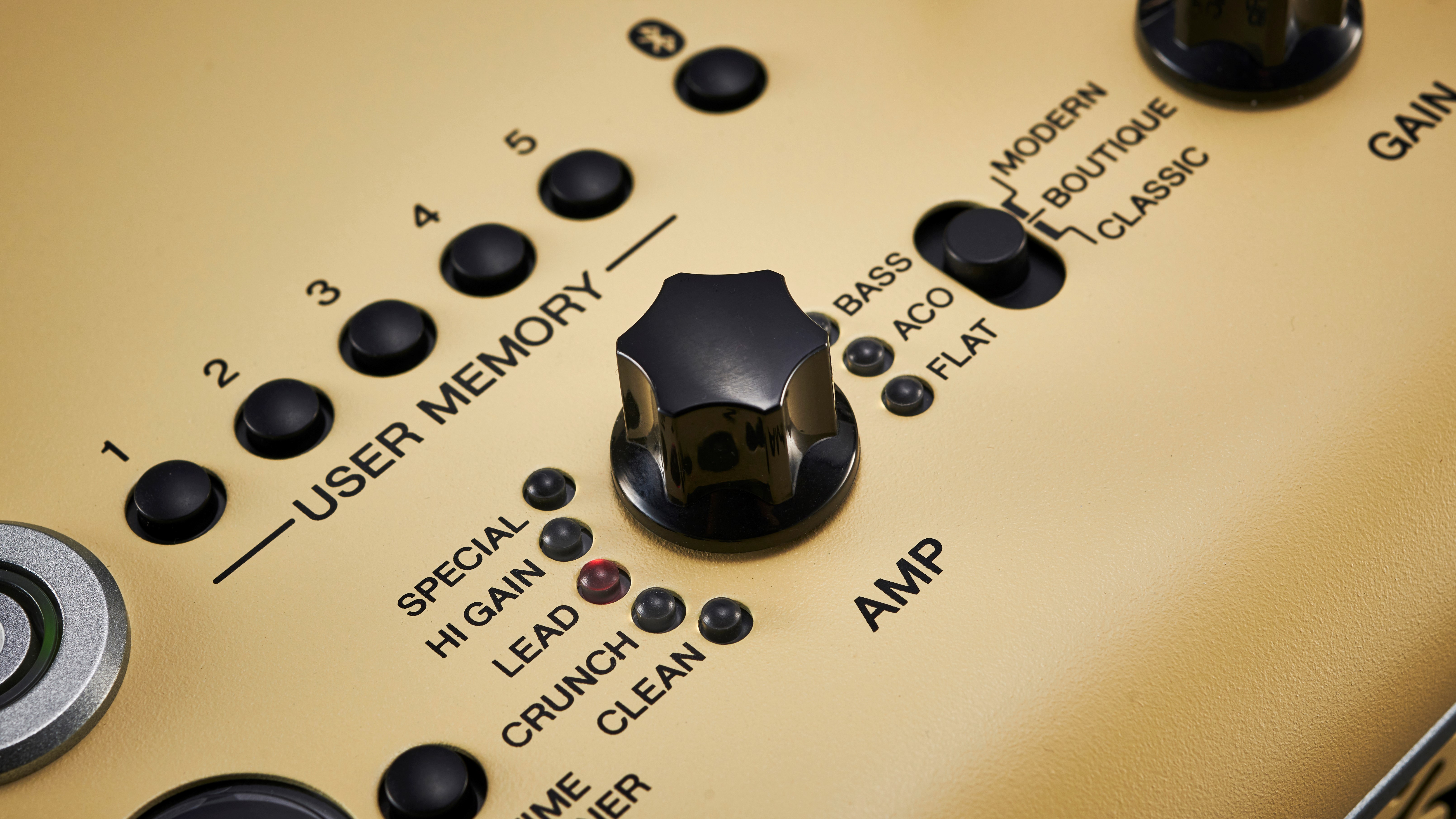
Five amp models – Clean, Crunch, Lead, Hi Gain and Special – are accessed via a rotary dial, but these are available in three different flavors, found by clicking a switch to either Classic, Boutique or Modern. In addition, there are settings for Flat (keyboards etc), Aco (acoustic guitar) and Bass.
Judicious twisting of the Gain knob and Master knob will adjust the amount of preamp and power amp saturation, while EQ is taken care of by the Bass, Middle and Treble knobs. The Guitar Output knob then governs the actual volume delivered to your living room. This can be balanced against the Audio knob that adjusts the loudness of a streamed backing track.
The THR30II takes pedals well, but for sheer immediacy of use it's impossible to fault the built-in chorus, flanger, phaser, tremolo and reverb effects. They're so good, and so easy to use – again via a suite of dedicated physical knobs – you may find your gigging pedalboard stays in its case when you're practicing at home.
Fall in love with a tone and you can save it to one of five user-memory buttons for easy recall.
We didn't bother that much with the THR Remote app, not because we don't like apps but because if you enjoy playing for the sake of playing then you really can access every setting you need without having to menu surf. That's a big plus for us. If, on the other hand, you love finessing (aka endlessly fiddling) then the app does give you much finer control. You can select cab emulations, activate a compressor, turn on a noise gate, assign third party footswitch support and more. You'll either love it or not use it at all.
Yamaha THR30II Wireless review: Gigging power?
Crank a Vox AC30 and your neighbor's neighbors will know about it because the paint will start peeling from their walls. The THR30II Wireless is also a 30 Watt amp, so surely it should be loud enough to gig with too? The short answer is no. Wattage ratings only have a small influence on how loud amps actually are, and comparisons are pointless. The truth is, the THR30II is designed as a practice amp that's most at home in a small room. If you play an acoustic singer/songwriter set with no drums, then you may get away with it in a modest venue but that's about it.
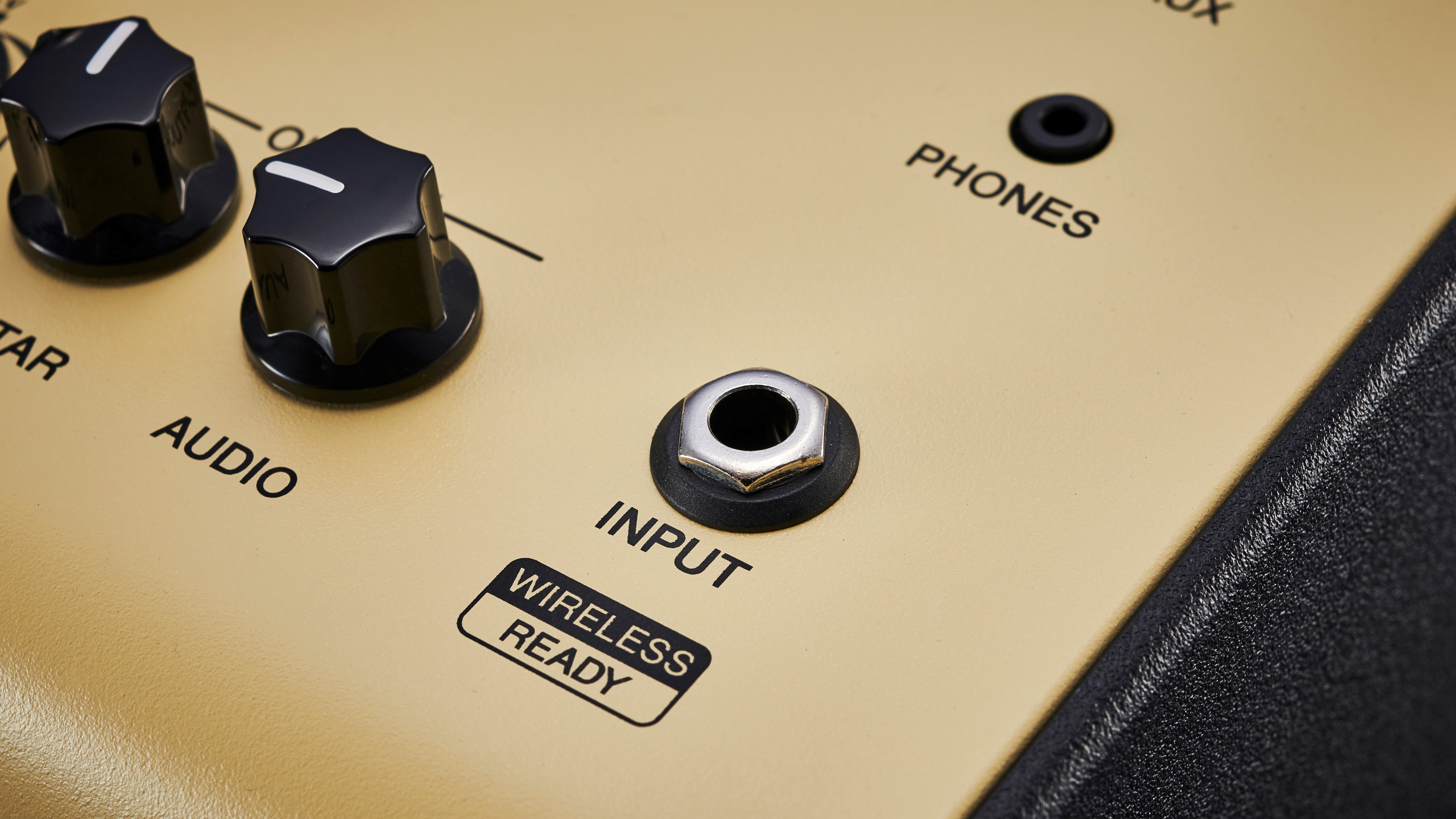
So, why did Yamaha up the wattage from the original's 10 Watts? We suspect it's all to do with increasing headroom for better playing dynamics, especially with looper pedals. The bigger speakers in the THR30II provide better bass response too. And, of course, the GAS in us knows that bigger is best when it comes to numbers. Even when it's not.
All is not lost, however. The THR30II has two quarter inch lineouts, which means that you can plug it straight into your venue's desk or PA. This is certainly worth experimenting with because, under the right circumstances, it would make a super little lightweight touring amp.
Yamaha THR30II Wireless review: Conclusion
Yamaha took its time resuscitating its THR series, but the wireless capabilities and rechargeable batteries now found in the premium models make them almost indispensable. The THR30II, with its comprehensive, user-friendly top panel and lineouts, is easily the pick of the bunch, even if the price tag is high.
Yamaha THR30II review: Specifications
- Amp Types: 15 Guitar Amp Models, 3 Acoustic Models, 3 Bass Models, 3 Flat Voicings
- Effects: Chorus, Flanger, Phaser, Tremolo, Echo, Echo/Rev, Spring Reverb, Hall Reverb, Compressor, Noise Gate
- Bluetooth: Audio/MIDI
- Guitar Wireless: Requires Line 6 G10T/GT10II transmitter
- Chromatic Tuner: Yes
- User memories: Five
- Connections: Input (1/4"), Aux (Stereo Mini), Phones (Stereo Mini), Line Out L/R (1/4" X2), DC In, USB Audio Class 2.0 compliant
- Speakers: 3.5"(9cm) Full Range x 2
- Rated Output: 30W (15W + 15W), On battery power – 15W (7.5W + 7.5W)
- Battery: Rechargeable, 5 hours life approx
- Dimensions: Width - 420mm; Height - 195mm; Depth - 155mm
- Weight: 4.3kg
- Contact: Yamaha
When Simon's childhood classical guitar teacher boasted he 'enjoyed a challenge', the poor man had no idea how much he'd underestimated the scale of the task ahead. Despite Simon's lack of talent, the experience did spark a lifelong passion for music. His classical guitar was discarded for an electric, then a room full of electrics before Simon discovered the joys of keys. Against all odds, Simon somehow managed to blag a career as a fashion journalist, but he's now more suitably employed writing for Guitar World and MusicRadar. When not writing or playing, he can be found terrifying himself on his mountain bike.
